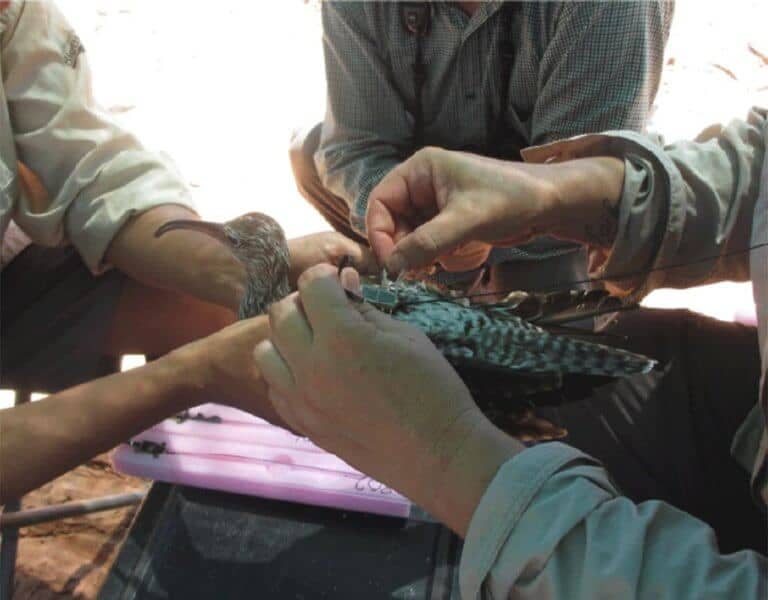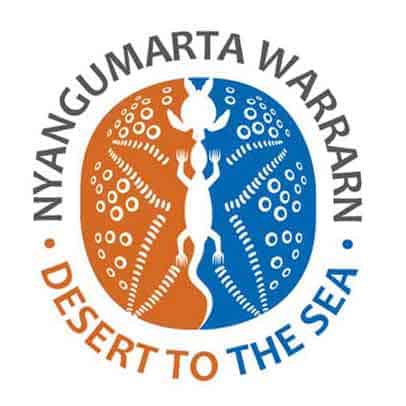A summary of the Northward journey
Now that two of our Whimbrels are busy breeding, it is a good time for us to look back at the magnificent journeys that they have made.


In February and March 2017, satellite transmitters were fitted on Whimbrels at 2 sites in north-west Australia; Eighty Mile Beach and Roebuck Bay, Broome. Whimbrel LA is a 2nd-year bird (born in 2015 Arctic breeding season) and was the first to receive the transmitter. One of the questions we were interested to know when we decided to deploy a transmitter on a 2nd-year Whimbrel was whether it would migrate north, or stay in Australia for the breeding season.
LA not only gave us the answer that it has decided to stay, it has also shown us that Eighty Mile Beach is an ideal destination for foraging waders as it doesn’t need to move around much. Over the past 5 months, LA’s movement has been limited to less than 20km along the shoreline, with most time spent at 43-52km south of the beach entrance from Anna Plains Station.

The next two Whimbrels were caught in the same cannon net catch at Roebuck Bay on February 24th, 2017. Both were adult birds (>2 years old) and as such, expected to migrate to the breeding grounds, which they successfully did!

KS took 44 days in total to migrate from Broome to breeding grounds in Sakha Republic, Russia (Table 1.). The total distance travelled was 10,412km. KU took 51 days – 7 more days than KS – to migrate from Broome to breeding grounds also in Sakha Republic, but travelled 508km less with a total distance of 9,904km flown.
Both KS and KU took 6 days to migrate non-stop from Broome to their first site in the northern hemisphere. KS covered 4,539km with an average speed of 31.5kph while KU covered 4,814km with an average speed of 33.4kph.
Although they departed Broome on a similar date, they migrated north with very different tactics. KS made two stops in Taiwan and two stops in China before entering Russia where it made another five brief stopovers before nesting. By comparison, KU made four stops in China and two in Russia before nesting.
Along the way, both KS and KU chose paddy fields in Panjin, Liaoning Province as their ‘longest stay’ stopover sites, landing just 50km apart from each other during their stay in May (Photo 2.).

The most remarkable story during the northward migration of these two Whimbrels must be the discovery of KS in Yilan, Taiwan before the satellite signal had been received. KS was found and photographed foraging together with a flock of seven other Whimbrels in one of the river channels in Xiapu wetland along the north-east coast of Taiwan (Photo 3.). We do hope to meet KS along the Flyway again on its southward migration.

Another satellite transmitter was fitted on Whimbrel JX on March 25th, 2017 at Roebuck Bay, Broome (Photo 4.). JX departed Broome slightly later than KS and KU on April 20th, 2017. After a continuous four day flight of 3,049km, JX unexpectedly stopped migrating soon after it crossed the equator and stayed at Malanut Bay in Palawan, the Philippines.
Over the past 86 days, JX has mainly used an estuary and two off-shore reefs 5-10km from the coast.

We are now all waiting for the next move of our Whimbrels when southward migration kick start.
Acknowledgements
Clive Minton
The extensive and expensive satellite tracking program we have set up in NWA has only been possible through the efforts and generosity of a large number of people and organizations. It is difficult to know where to start with the formal acknowledgements so I will list them – but not in any particular order of priority.
- The members of the AWSG NWA 2019 Wader and Tern Expedition and similar NWA expeditions in previous years, are particularly thanked for their efforts in the field in catching, banding and deploying transmitters on a range of species.
- Landowners are especially thanked for permission to go onto their property to enable us to catch various species in order to deploy the satellite transmitters. In particular we thank Anna Plains Station for giving us the freedom to roam over large areas of grazed grassland when counting and catching target species.
- AWSG acknowledges the Yawuru People via the offices of Nyamba Buru Yawuru Limited for permission to catch birds on the shores of Roebuck Bay, traditional lands of the Yawuru people.
- AWSG acknowledges the Karajarri and Nyangumarta people for permission to catch birds to be marked for this project on the shores of 80 Mile Beach, traditional lands of the Karajarri and Nyangumarta.
- The cost of the satellite transmitters, which cost around $5000 each, and the satellite downloading costs (around $1000-1500 per month) have been met by a variety of sources. Private individuals (Charles Allen and Doris Graham) have made most generous individual contributions. Kate Gorringe-Smith and her team of artists involved in The Overwintering Project made a large, generous donation from funds raised during their various public exhibitions. The annual NWA Expedition members, collectively, also provided significant funds each year.








